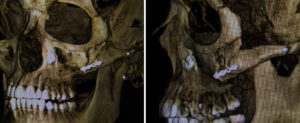
But despite being a commonly performed Asian facial procedure, cheekbone reduction is not complication free. Being performed mostly in younger patients, its most frequent aesthetic issue is that some patients develop soft tissue sagging after the procedure. Interestingly it does not occur in all patients even though loss of bony structural support as well as subperiosteal stripping of tissues for access is done in all patients.
In the May 2018 issue of the Journal of Craniofacial Surgery, an editorial was published entitled ‘Purpose of Zygoma Reduction: Not Just For A Smaller Cheekbone’. In this thoughtful editorial the authors review the concept of the procedure which has about a thirty year history. They contend that the purpose of cheekbone reduction is not just to make the cheeks les prominent but to also prevent soft tissue sagging. They propose that a coronal or superior approach would better serve these purposes than an intraoral technique.
I think there is not much doubt that performing cheekbone reduction from above would have much less risk for cheek sagging. The culprit in postoperative soft tissue sagging after cheekbone reduction is the loss of ligamentous attachments, in my opinion, much more so than repositioning of the bones inward. Tissues will fall down when the loss of their attachments is done from an inferior direction. Since there is no really assured way to resuspend the tissues from below (although we should work on this) it is logical to consider a superior approach.
The problem with the coronal approach to cheekbone reduction is that it becomes a much ‘bigger’ operation with a scar liability that the intraoral approach does not have. It creates another aesthetic problem for which the patient has to decide which risk they can live with better.
Dr. Barry Eppley
Indianapolis Indiana


